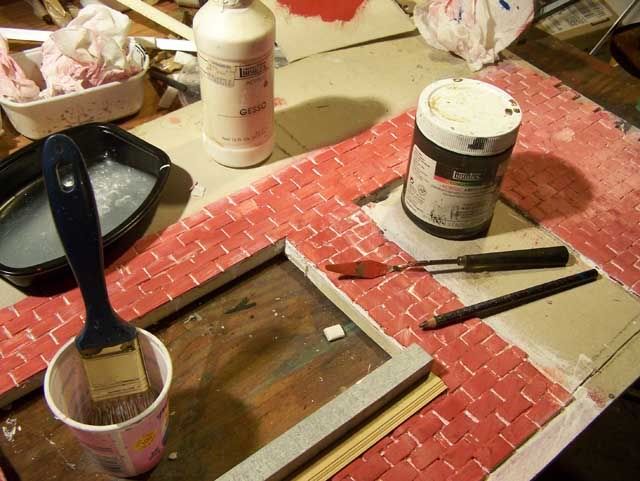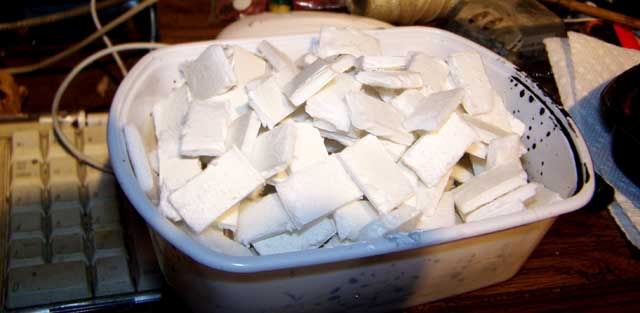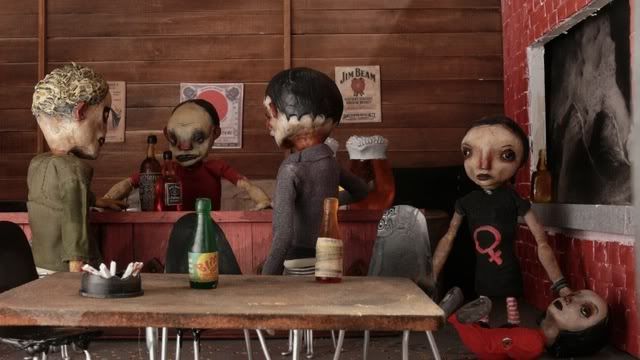
Last night I decided to put the new wall onto the set even though I have more work to do on it... I wanted to see it all together for a preview and mess around with lighting to try to find an approach to use for this film. This link should take you to Photobucket and from there you can download the full size image... it looks SO MUCH better than this little rinky-dink version!! (scroll over the picture to see the download option).

This is what the shot was looking like at first. Download this one here. Note the problems with the lighting.... very hard glaring light on the foreheads, and the faces in shadow. This is a result of the way they're sculpted. Note... I am NOT dissing Scott Radke's sculpting!!! I LOVE these heads... but because of the way they're done... eyes set so wide and facing different directions, bare foreheads with no hair covering them that face directly into the light plane, and somewhat glossy paint - it makes them very hard to light. It's a challenge (like everything about this project). And it's forcing me to dig deep and find a different way to work. Here's the solution that's working best so far...
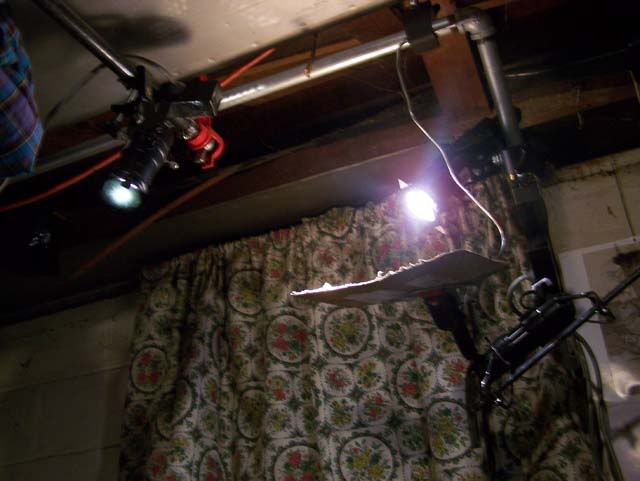
These are my lights. I'm only using 2 for this shot, and note... they're both facing FORWARD.... rather than the more normal option of being aimed directly at the set. See the next image to understand WHY.
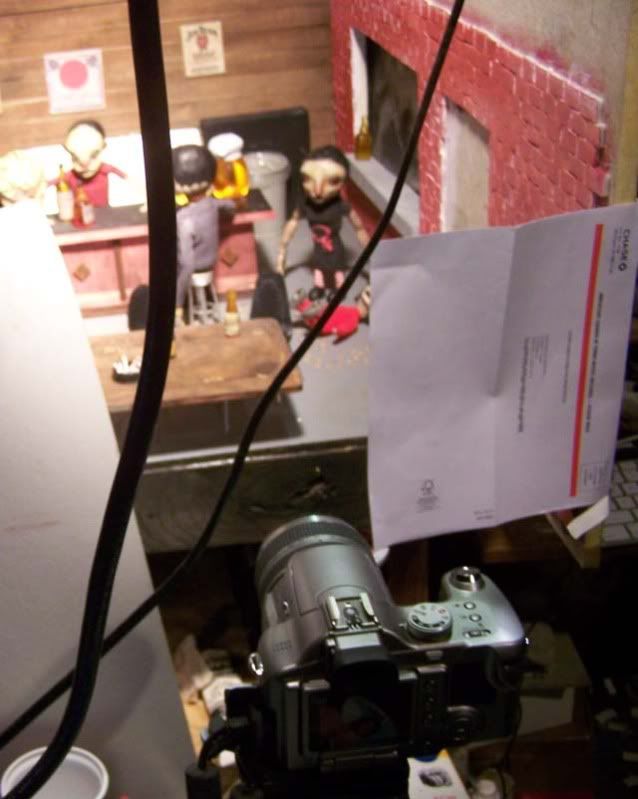
See the big white sheets of paper fastened to the front of the set? They're reflectors. The lights are both aimed at them, and then only reflected light is bounced back onto the set to light the puppets. {for this pic I actually had a light aimed directly at the set just to make things show up better} Reflected light has some very nice properties... it's very diffused, doesn't cast a clear shadow, and it has a lot less glare than direct light does. And because this is all fill light coming from the front, it fills in details like the eye sockets that were in deep shadow before. This kind of reflected lighting seems to be the only solution to the lighting problems posed by these heads.
But... if you compare the two shots above, even though the direct lighting causes glare and shadow problems, it has a much more dramatic look to it... creating great shadows that define the form of the heads... the fully reflected light doesn't do this. In fact, reflected light like this is often called cartoon lighting, because of the lack of drama and overall illuminated feel. I want to try to find a halfway solution... I think if I can aim a light or two directly at the set with plenty of neutral density gels (grey color filters) to dim them down while still keeping the reflected lighting I currently have, I should be able to get the best of both worlds. Time will tell.

